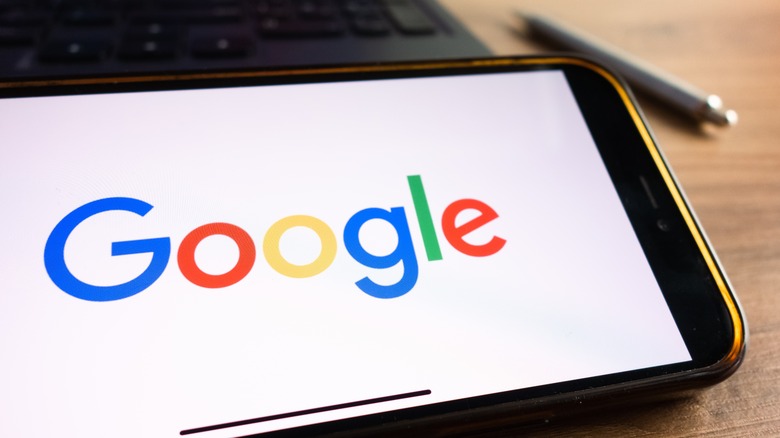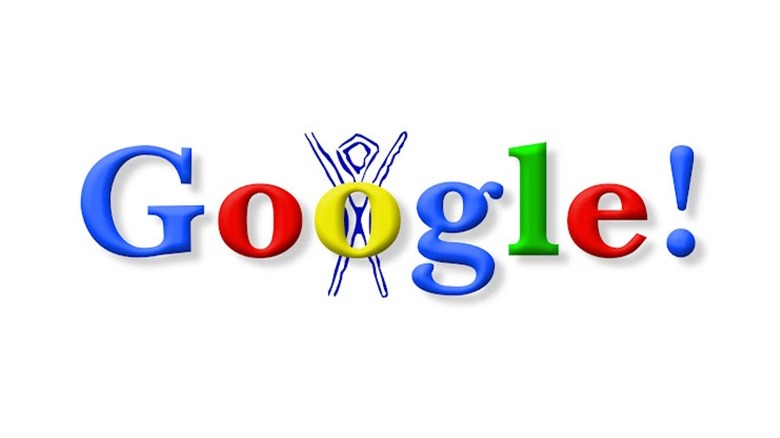The Story Behind The First Google Logo Doodle
When you type in Google's URL into a web browser, depending on the date, the search engine's typeface is usually adorned with some artistic flair. It may seem like these special drawings have been around ever since Google took its place at the forefront of internet advancement — on special holidays and dates that are significant in history, you can expect to see a doodle commemorating the highlighted event. It's a fun little Easter egg of sorts that can give you a tidbit of trivia and something to think about before you get on with your Google search.
There have been over 5,000 doodles applied to the Google logo in various internet homepages worldwide, and each one was conceptualized and created by a team of artists and engineers. A team of Google employees also gets together on a regular basis to pick which dates and significant events should be memorialized with a doodle. Design inspiration is taken from members of the Google community, including staff and the general public who use the platform.
What drawing paved the way for this fun and inspiring Google tradition, though? Why was the first Google doodle created in the first place?
A fun spin to a generic out-of-office notice
Back in 1998, Google founders Larry Page and Sergey Brin decided they needed to take a short break from work, and made plans to attend the Burning Man festival in the Nevada desert. However, they needed to let people know of their week-long absence. According to Google, rather than post a drab out-of-office message, they decided to pay homage to the gathering they were scheduled to attend and added a crude line drawing of a stick man — seemingly an adaptation of the Burning Man emblem — behind the second "o" in "Google!" The resulting doodle was posted on the Google homepage on August 30, 1998 — a day before the festival was set to begin — and ignited the concept of featuring Google doodles on the homepage to celebrate or mark significant events.
Fast-forward two years later: Page and Brin requested Dennis Hwang, Google's current webmaster (who was an intern then), to conceptualize a doodle for Bastille Day. The final product was a huge hit with Google users, prompting the founders to officially promote Hwang to "chief doodler." Since then, illustrations began beautifying the Google monogram on a more regular basis, starting with celebrating well-known holidays. Today, doodle-highlighted events include anniversaries and special dates significant to a wide variety of inventions, as well as pioneers in art, science, and innovation.
If you appreciate Google doodles more than the average user, you can take a deep dive into the expansive doodle archive. Or, if you're particularly inspired to one-up the simplicity and straightforwardness of the original stick man doodle, you can submit design ideas to Google directly and be one of the hundreds of proposals sent in daily.

